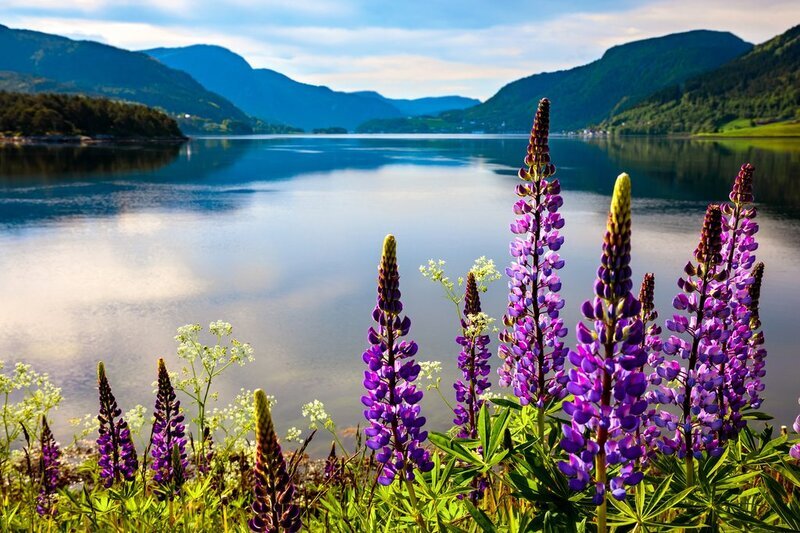
$50bn SDG-targeted investment proposals at SDG Investment Fair
Over 100 SDG-aligned projects with a total investment scope of $ 50 billion have been presented during the ...

As plans to relax pandemic travel restrictions begin to take shape, travel journalists are racing to pinpoint emerging travel trends. Once the global travel industry clicks back into gear, many think sustainable travel will be the number one growth area.
Author Elizabeth Becker told National Geographic she believes consumers are “doubling down on sustainability” and that post-pandemic travelers will demand companies implement “responsible travel policies.” Others believe change is happening on the supply side too. Pól Ó Conghaile from the Irish Independent said the pandemic has given tourism businesses time “to run the rule over their operations, and to see sustainability not just as a philosophy, but as economic sense.”
It’s one thing for a business to call its operations sustainable, but quite another for them to prove it. Norway has long been a “sustainability trailblazer,” according to Stockholm-based travel consultant Neil Rogers. He told Outside that it’s because most Norwegians live close to nature: “They appreciate and care about the places they recreate in and understand that they must rapidly take actions to protect and conserve their environment and culture.”
Norway has established a range of certifications to help consumers distinguish between those who talk and those who do. Innovation Norway, which sits above the destination company Visit Norway, outlined 10 principles of sustainable tourism based on the conservation of nature, the environment and culture.
Back in 2013, Norway established a Sustainable Destination standard that measures more than 104 indicators covering nature, culture, environment, social values, community involvement and economic viability. Operators can apply for the Ecotourism Norway certification, while hotels and other enterprises can shoot for Eco-Lighthouse status to document their environmental efforts.
Here’s just a selection of some of Norway’s leading sustainable travel destinations.
While sustainable travel strategies are all the rage today, Røros began focusing on heritage and sustainable tourism back in 2008.
Three years later, the small former copper mining town in central Norway won its first of several sustainable tourism awards.
A UNESCO World Heritage Site since 1980, the local community has long been shaped by its mining heritage. The Røros strategy now focuses on limiting the impact of tourism on the environment and local culture.
One concrete example of the strategy is the focus on local food. The town of little more than 2,000 people boasts its own butter, ice-cream, reindeer meat products and beer.
A vast area of forest known as Oslomarka surrounds the Norwegian capital providing a playground for residents and visitors. As such, human use of the forest is considered a central part of the effort to conserve the area.
Law regulates the use of the forest and there is extremely limited scope for development. This careful management ensures many thousands of people can continue to enjoy the hiking and cross-country trails that run deep into the wilderness.
It’s not just for the active, though. Established by Friends of the Earth Norway, the eventyrskoger (fairytale forests) program provides space for people “to explore their identity and emotions” in sections of virgin forest.
Around 60,000 people make the challenging all-day hike along the Besseggen ridge each year. They are rewarded with unforgettable views galore, most notably the point at which Besseggen splits the Gjende and Besssvatnet lakes.
Despite the remote location near Jotunheimen National Park, it’s possible to enjoy Besseggen by public transport and eco-friendly options.
Gjendesheim is the Norwegian Trekking Association’s most frequented lodge in the area. During summer there are daily bus connections from Oslo, while the lodge runs an electric vehicle to move guests around the area.
The lodge uses only locally-sourced food and refuses the obvious profit center of selling bottled water to hikers. “Our tap water is the purest thing you can bring on your mountain hike,” said lodge manager Marius Haugaløkken to Visit Norway.
Prior to the pandemic, there were growing concerns about overtourism in the Norwegian fjords. With growing numbers comes growing pollution, which could cause irreparable damage and risk the fjords’ status as a UNESCO World Heritage site.
Much of that pollution comes from cruise ships, which deposit hundreds of people at at time into small fjordside communities such as Geiranger and Flåm. To improve the environment in and around the fjords, the Norwegian government has introduced a zero-emission requirement for ships sailing in the World Heritage fjords from 2026, although this may be extended to 2030.
Some local fjord traffic is already emissions-free. The hybrid Vision of the Fjords was followed up with two all-electric passenger ferries that now operate sightseeing cruises on the fjords.
If you want to spend longer exploring the vast fjord region, eco-friendly tours are available in many destinations. In Geiranger, a GPS-based audio guide in an all-electric Renault Twizy vehicle, perfect for hyperlocal exploration. Thanks in part to its focus on locally-sourced food, the Fretheim Hotel in Flåm is a certified Eco-Lighthouse hotel.
Over 100 SDG-aligned projects with a total investment scope of $ 50 billion have been presented during the ...
Global electric car sales are set to hit around 17 million by the end of ...
Ericsson Canada marked the Earth Day by joining the Environment and Climate Change Canada’s (ECCC) Net-Zero ...


اترك تعليقا